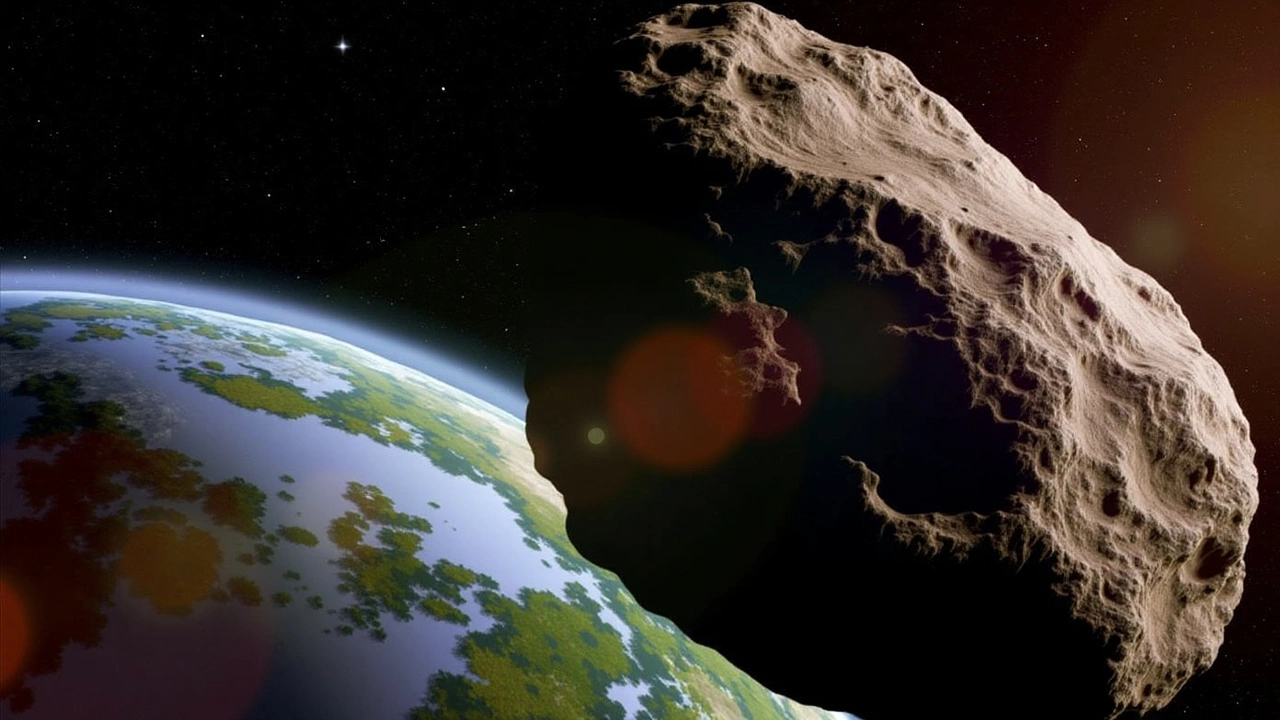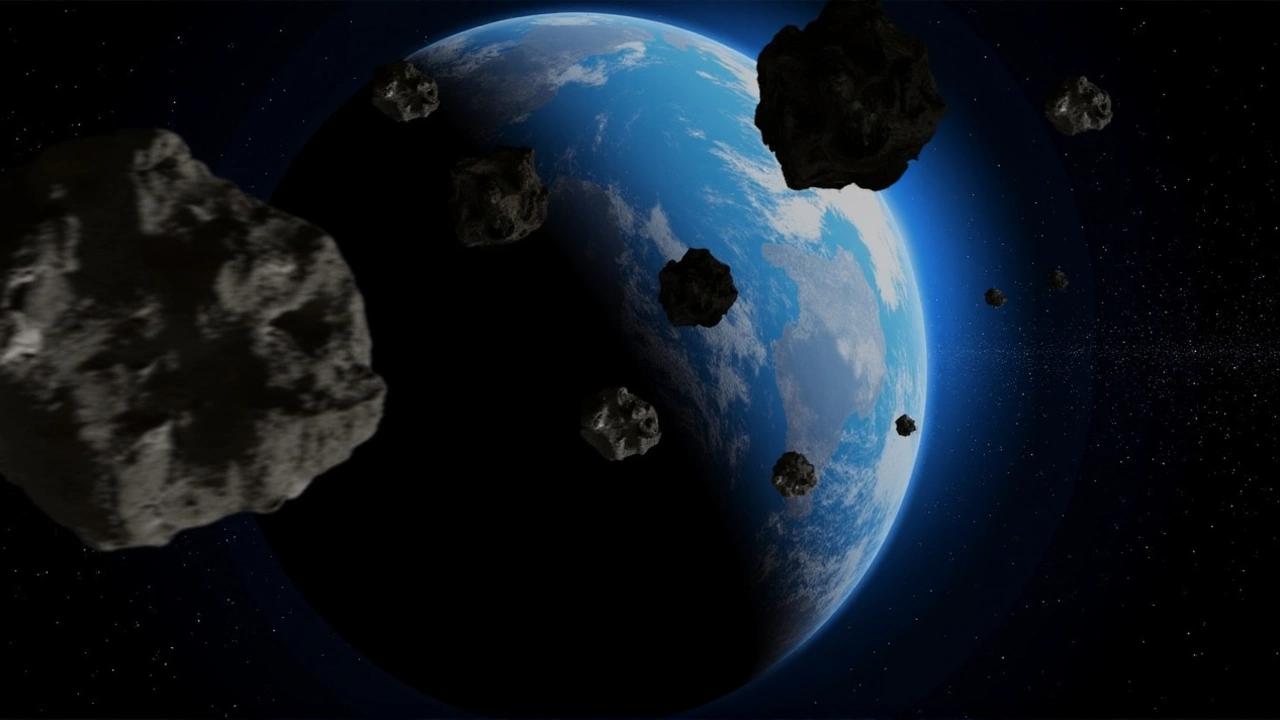Asteroid 2024 YR4: An Imminent Threat to Earth with a Significant Collision Risk
An Asteroid's Potential Impact: Understanding the Threat
In the ever-expanding universe, celestial bodies such as asteroids zip through space with abandon, sometimes coming alarmingly close to Earth. Among them, one recently identified asteroid, known as 2024 YR4, is garnering particular concern among the scientific community. Discovered by the Asteroid Terrestrial-impact Last Alert System (ATLAS) on December 27, 2024, this asteroid has a notable chance of impacting Earth, with NASA reporting a 1-in-83 likelihood of collision in the year 2032. It stands as a testament to both the marvels and dangers that the cosmos holds.
The Discovery and Classification of Asteroid 2024 YR4
Astronomers worldwide are constantly on the lookout for celestial objects that might pose threats to our planet. 2024 YR4, approximately 180 feet or 55 meters in size, is one such entity. Despite its relatively small size in cosmic terms, it still holds the potential for significant destruction. The asteroid, if it were to strike Earth, could unleash around 8 megatons of energy, a force that is more than 500 times the energy released by the atomic bomb dropped on Hiroshima during World War II. This comparison alone highlights the asteroid's catastrophic potential. Recognizing its threat, the International Astronomical Union has rated it a 3 on the Torino Impact Hazard Scale, suggesting that it demands vigilant observation due to its more than 1% chance of striking Earth.
The asteroid’s discovery is credited to the diligent researchers and engineers involved in ATLAS, a project dedicated to providing the earliest possible warning of potentially hazardous asteroids. Understanding the risks associated with space rocks is critical. The work of scientists like David Rankin, an engineer with the Catalina Sky Survey, becomes paramount as they track the evolving probability of impact. Rankin noted that, with ongoing observations, the chances of impact have slightly increased to a 1-in-83 likelihood. Such a probability ranks it as one of the highest risks from an object of its size currently tracked by scientists.
Preparing for Potential Impact: Monitoring and Mitigation
Given the possible implications of an impact, entities like NASA and the European Space Agency are not taking the potential threat lightly. They are actively engaged in extensive monitoring to refine the asteroid's orbit and better ascertain its path relative to Earth. This work involves telescopic observations, mathematical modeling, and international collaborations, all conducted with the aim of reducing the uncertainty in 2024 YR4's trajectory estimation. Achieving high precision in these calculations is crucial for making informed decisions about the next steps.
Yet, monitoring alone may not suffice if the threat persists. In the scenario where the impact risk maintains or surpasses the 1% threshold, conversations around mitigation strategies would become increasingly prominent. This could entail international collaboration to develop a space mission designed to divert or destroy the asteroid before it reaches Earth. The concept isn't unprecedented — NASA's recent Dart mission illustrates the feasibility of such endeavors, using spacecraft to alter the trajectory of space objects. Mitigation missions would aim to replicate this success, albeit on a potentially life-saving scale.
The Role of Global Agencies in Future Preparedness
The potential of an impact isn’t just a concern for the countries directly threatened; it holds global significance. As such, a concerted international effort would be paramount in addressing the threat. Both the public and policymakers have key roles to fulfill, from raising awareness about potential threats to supporting legislative efforts that fund and legitimize space defense measures. While DEFCON-like alert statuses are rare in astronomy, the pressing nature of asteroid threats calls for well-coordinated responses exceeding geopolitical boundaries. It becomes vital to share technology, knowledge, and strategies among nations to effectively reduce the risks posed by 2024 YR4 and similar threats in the future.
Data sharing agreements and collaborative research initiatives are among the ways international bodies can be prepared. Initiatives like the International Asteroid Warning Network already set the foundation for such partnerships. These coalitions can inspire confidence in the collective handling of potential asteroid impacts, ensuring humanity remains ahead of existential threats from outer space.

Space Exploration and a New Age of Preparedness
The discovery of 2024 YR4 underscores the importance of continued exploration and research in space sciences. It brings to the fore discussions about how humanity interacts with and prepares for celestial phenomena beyond our atmosphere. Even as the cosmos presents us with profound mysteries and untapped potential, it also prompts us to recognize and mitigate those elements that could become harbingers of danger.
In an era characterized by rapid technological advancements, such encounters with cosmic objects challenge us to harness those capabilities for protection. Space agencies and scientists worldwide face the complex task of balancing exploration with planetary defense. The shifting probabilities and possibilities brought by reports of asteroids like 2024 YR4 emphasize the need to advance our technologies and methodologies to safeguard Earth. With continued investment in and attention to asteroid detection and deflection, we can look forward to a future where such cosmic threats can be preemptively addressed and neutralized.





